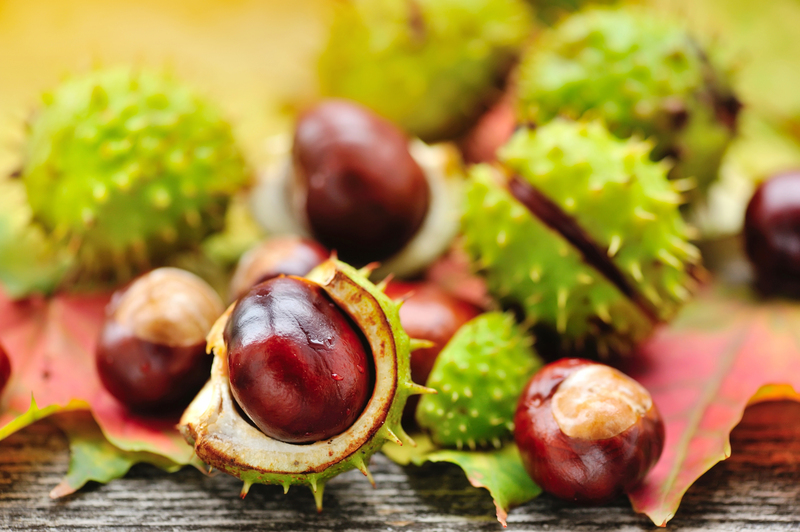Gleaming Guide: Comprehensive Jewellery Cleaning Methods
Posted on 08/06/2025
Gleaming Guide: Comprehensive Jewellery Cleaning Methods
Jewellery is more than an accessory; it's a reflection of personality, a reservoir of memories, and a symbol of special moments. To keep your precious pieces sparkling, regular cleaning is essential. In this comprehensive guide to jewellery cleaning methods, we unpack effective routines, expert-approved tips, and preventive measures for all types of gems and metals. Whether it's your diamond engagement ring or a treasured silver necklace, discover how to restore lasting brilliance with these proven techniques.
Why Jewellery Cleaning Matters
- Preservation of Value: Dirt, oil, and tarnish cause precious metals and gemstones to lose their luster and even degrade in quality over time.
- Hygiene: Rings, bracelets, and earrings gather grime, lotion, and bacteria--cleaning them protects both your skin and your jewels.
- Aesthetics: Polished, shimmering jewellery accentuates any outfit and boosts confidence.
Neglecting to clean your jewellery can result in irreversible damage, decreased value, or loss of sentimental significance. Let's dive into the best practices for maintaining the pristine beauty of your precious collections.

The Basics: Understanding Types of Jewellery
Different jewellery materials require unique cleaning methods. Here's a brief overview:
- Gold jewellery: Durable, yet prone to scratches and dulling.
- Silver pieces: Soft and susceptible to tarnish.
- Platinum and palladium: Rare metals, generally easier to clean but should avoid harsh abrasives.
- Diamonds and gemstones: Each stone has its own care requirements. Porous stones like opals, pearls, and turquoise are delicate and must be handled gently.
- Costume jewellery: Usually made from base metals or glass, they need extra caution to avoid chipping or water damage.
Choosing the right jewellery cleaning technique starts with understanding your piece's materials, settings, and any known sensitivities.
Professional Jewellery Cleaning Services
When to Choose a Professional Jeweller
- Delicate pieces: Antique, heirloom, or intricate items benefit from professional expertise.
- Damage concerns: Loose prongs, cracked stones, or bent settings need specialist attention.
- Routine maintenance: Twice-yearly professional cleaning is recommended for engagement rings and daily-wear pieces.
How Experts Clean Jewellery
Jewellers often use a combination of ultrasonic cleaners, steam cleaners, and gentle polishes. Ultrasonic machines emit high-frequency vibrations in a liquid bath to dislodge dirt and grime. Steam cleaning utilizes pressurized steam to blast away debris from hard-to-reach areas. After cleaning, the professional will typically inspect the settings, tighten prongs, and polish any surface scratches.
Benefits of Professional Jewellery Cleaning
- Thoroughness: Accesses hidden crevices and fragile mechanisms without risk.
- Expert inspection: Routine upkeep can prevent expensive repairs or gemstone loss.
- Professional-grade shine: Nothing rivals a jeweller's final polish and buff.
At-Home Jewellery Cleaning Methods
General Guidelines for Home Cleaning
- Check settings first: Inspect for loose stones or settings to avoid accidental loss during cleaning.
- Use mild solutions: Harsh chemicals can damage delicate finishes.
- Rinse and dry: Remove all cleaning solution residues; pat jewellery dry with a lint-free cloth.
Safe Home Cleaning Solutions
Here are tried-and-tested recipes and methods for sparkling results:
-
Warm Water and Mild Dish Soap:
- Mix a few drops of gentle dish soap in a bowl of warm (not hot) water.
- Soak your jewellery for 15-20 minutes.
- Gently scrub with a soft toothbrush.
- Rinse thoroughly and dry.
-
Baking Soda Paste (For Silver):
- Combine three parts baking soda to one-part water to form a paste.
- Rub gently onto silver pieces, then rinse off and buff dry with a soft cloth.
-
Aluminium Foil and Baking Soda (For Deep Tarnish):
- Line a bowl with aluminium foil, add hot water and a tablespoon each of baking soda and salt.
- Place tarnished silver in the solution for 2-3 minutes. The reaction removes tarnish instantly.
- Rinse and dry thoroughly.
-
Vinegar Solution (For Gold and Gemstones):
- Add equal parts white vinegar and water.
- Briefly soak gold or diamond jewellery, avoiding soft stones like pearls.
- Use a soft brush, rinse well, and dry.
Cleaning Pearls and Porous Gemstones
Pearls, opals, turquoise, and other soft or porous gems require special care. Never immerse them in water.
- Wipe gently with a damp, soft cloth after each wear.
- For deeper cleaning, use a cloth dipped in a mix of water and a tiny drop of baby shampoo. Wipe clean immediately with a dry cloth.
- Store in a soft pouch away from direct sunlight and harsh chemicals.
Tips for Cleaning Diamond Rings & Engagement Jewellery
- Soak in warm water and mild dish soap for 20-40 minutes.
- Scrub gently underneath settings where grime collects.
- Regularly inspect for any loose stones or bent prongs.
Pro Tip: Avoid over-the-counter jewellery cleaners containing harsh chemicals or ammonia, especially for vintage and costume pieces.
The Pros and Cons of Ultrasonic Jewellery Cleaners
How Ultrasonic Cleaners Work
These machines use high-frequency sound waves in liquid to loosen debris. They're popular for at-home use due to their ability to clean in minutes, but they're not safe for all jewellery.
- Safe: Diamonds, gold, platinum, sapphires, and rubies (with secure settings).
- Unsafe: Porous gems (opals, pearls, emeralds), glued settings, antique jewellery.
Always follow the manufacturer's instructions and err on the side of caution. If in doubt, opt for less invasive methods.
Preventing Tarnish and Jewellery Damage
To extend time between cleanings and maximize shine, take these preventive steps:
- Store properly: Keep pieces separate in soft-lined boxes or pouches to prevent scratches and contact tarnish.
- Avoid exposure: Remove jewellery before swimming, showering, or applying lotions and perfumes.
- Routine wiping: Wipe after each wear to remove sweat, oil, and dirt.
- Regular inspections: Check for loose stones, bent prongs, and weakened clasps monthly.
Specialist Jewellery Cleaning for Vintage and Antique Pieces
Older jewellery or pieces with delicate settings require a gentle hand and specific expertise:
- No soaking: Older adhesives and delicate filigree can dissolve or break apart in liquid.
- Use a soft artist's brush: Lightly dust and gently clean detailed work.
- Consult professionals for restoration: For extensive tarnish or repairs, always use a reputable jeweller.
Innovative Jewellery Cleaning Solutions and Hacks
Household Items for Quick Shines
- Toothpaste: A non-gel, non-abrasive toothpaste can polish silver in a pinch. Rub gently and rinse thoroughly.
- Club Soda: Soak diamonds and rubies briefly for added sparkle.
- Window Cleaner: Only for diamonds set in gold; use sparingly and rinse well.
Warning: These are last-resort or quick-fix options and should not replace proper cleaning routines.
Jewellery Cleaning Kits
Commercial kits contain specific cleaning agents, brushes, and cloths tailored to various metals and stones. Read instructions to ensure compatibility with your jewellery type before use.
Common Mistakes in Jewellery Cleaning
- Soaking pearls or antique pieces in liquid for extended periods.
- Using paper towels, which can scratch precious metals and stones.
- Overuse of ultrasonic cleaners on delicate or glued settings.
- Mixing different jewellery in one bath can result in scratching and tarnish transfer.
- Neglecting regular inspections leads to unnoticed damage or lost stones.
Jewellery Cleaning Frequency Guide
- Everyday Wear: Wipe with a soft cloth daily; clean thoroughly once a month.
- Occasional Wear: Clean after each use and before storage.
- Heirlooms/Antiques: Once or twice per year or as recommended by a jeweller.

Ultimate Jewellery Care Tips
- Keep cosmetics away: Apply perfumes and lotions before jewellery.
- Remove before strenuous activity: Prevent knocks, sweat exposure, and potential breakage.
- Get annual professional checks: Prevent expensive repairs and preserve sentimental value.
Conclusion: Shine On with Proper Jewellery Cleaning
With these comprehensive jewellery cleaning methods, you can ensure every piece remains as radiant as the memories it holds. By understanding your jewellery's materials, choosing the right cleaning strategy, and adhering to preventive care, your treasured gems and metals will dazzle for generations to come. For especially valuable or sentimental pieces, don't hesitate to enlist expert help--your collection deserves nothing less than the best in care and attention.
Stay polished, stay proud, and let your jewellery shine!


